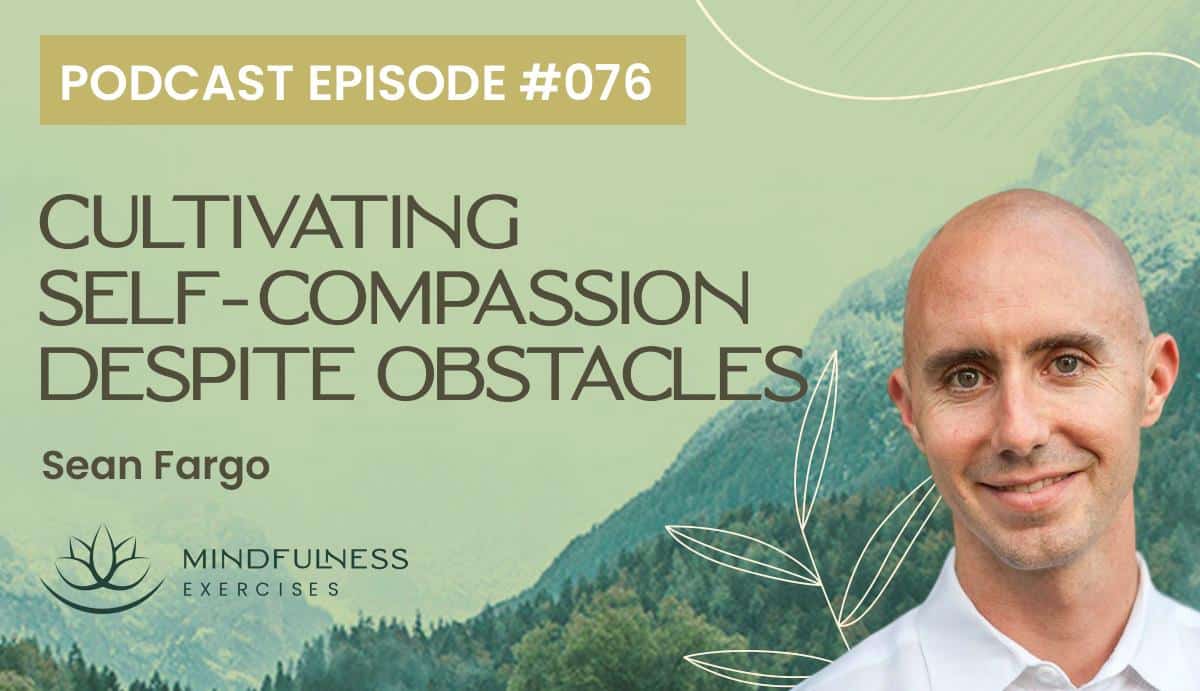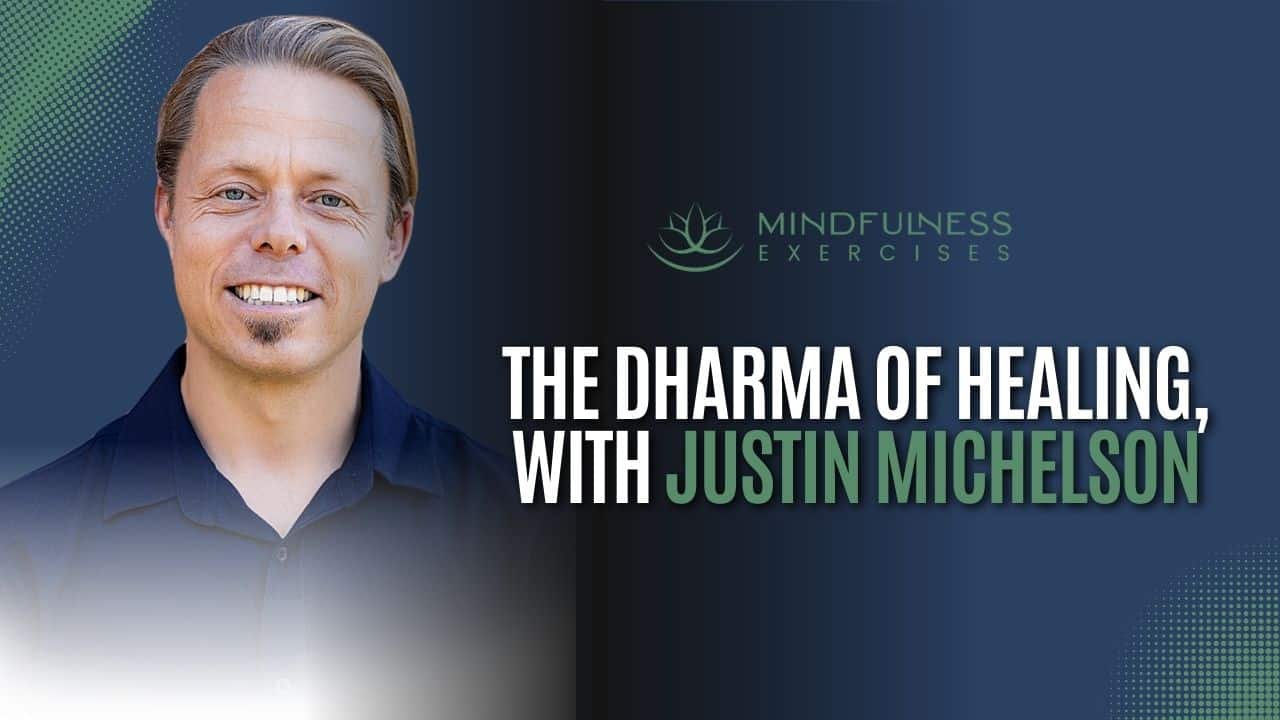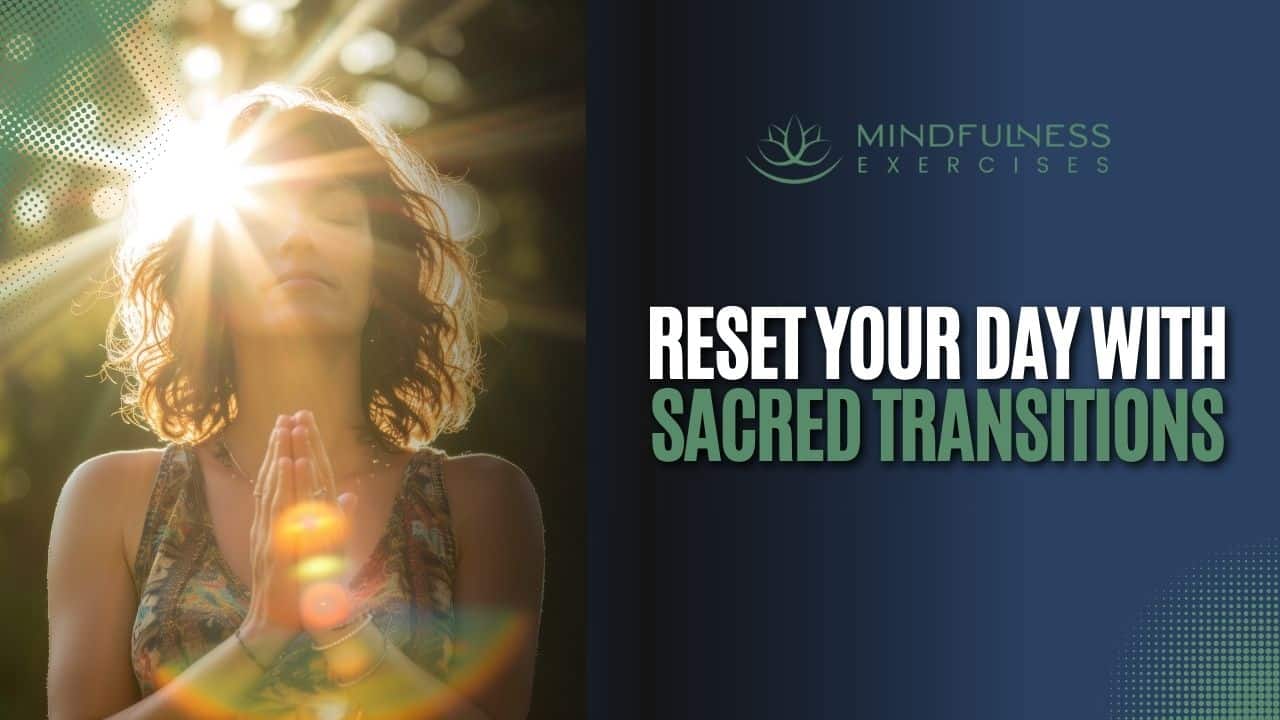Listen now

Offering compassion as a response to perceived suffering is a natural, human thing to do. Why then, is it so difficult to practice self-compassion when we, ourselves, are hurting?
In this episode, mindfulness teacher Sean Fargo identifies some common obstacles to self-compassion, and invites us to overcome them by slowing down and feeling our feelings with patience, tenderness and care.
See below for more details.
What You’ll Learn in This Episode:
Show Notes & Quotes:
A brief definition of self-compassion
Most of us know what self-compassion is, even if we don’t use those exact words to describe it. Self-compassion includes moments of offering ourselves presence, grace, kindness, and forgiveness. It entails wishing ourselves well. If we know what it is, why then, can it still be so challenging to practice?
“There’s these other conditioned beliefs, patterns, that we adopt that get in the way of this natural, human, experience. There’s a lot of conditioning around this, at least in the west.”
The obstacles that keep us from offering ourselves compassion
We may have learned from our caregivers and our society that it’s not ok to not be ok. Parents may be quick to encourage bypassing emotions with candy or other distractions. We may have internalized statements such as ‘boys don’t cry,’ or ‘it’s unlady-like to get so angry.’ We might simply be afraid to turn toward uncomfortable emotions, worried they will swallow us whole.
“A lot of people are scared to open to their suffering. And that’s a form of suffering. And so oftentimes, we project that outwards and we fear other people (expressing emotions) because we might fear that we’ll get lost in it. We’ll never come back, or that it’s self-indulgent, or that it’s going to be too intense, or that we’ll admit to our own unworthiness.”
Why it’s ok to not feel happy all the time
Cultural messaging would have us believe that if we’re not happy, something’s gone wrong. If we’d only buy the next thing, go on a bigger vacation, or lose more weight, we’d be happy all the time. But when we’re present for real life, we see it always has its ups and downs. A full life holds within it intense, overwhelming joy, and also deep sadness and grief. Accepting this truth prevents much suffering.
“I take it a step further from ‘It’s ok to feel what you feel,’ to ‘It’s important to feel what you feel.’ It’s not just ok, it’s important. And [...] it’s something to be celebrated. You’re allowing yourself to feel this. I’m allowing myself to feel this. I don’t need to figure it out, I don’t need to rationalize it, I don’t need to teach myself through this. Can I feel? And there are so many cultural messages that are the opposite to that.”
Letting go of the stories that get in the way of our self-compassion
Each of us has a story about who we think we are. Sometimes, we hold too tightly to this story, or to parts of it that simply aren’t helpful or true. For example, men might over-identify with the hero mentality, that it’s not ‘manly’ to open to their emotions. When we soften our hold on these stories, we create space in which we can experience ourselves as multi-layered human beings.
“I am a bad person, I am someone who does this. I am someone who doesn't do this. I am a rational, head-based person. I am damaged goods. I am lost. Whatever we’re carrying around about who we think we are, what we think we are, see if you can just soften that, drop that a little bit, if any of those ring true. I am unworthy. I am not good enough. I am not as bad as other people. Just drop these stories a little bit and just sense into this experience, right now, of being me.”
Opening to suffering may be hard, but we don’t have to do it head-on
Opening to our suffering can be uncomfortable and challenging. If we view the process as a battle, it can seem harder. Genuine self-compassion is an act of moment-to-moment gentleness. Just acknowledging our pain is enough. If we feel resourced, we can turn toward it, explore it further, and stay with it as it changes and moves. As Sean mentions in episode #045, Easing Into Self-Compassion, self-compassion is never an all-or-nothing process.
“It doesn’t have to be doing. Just, kind of opening a little bit to what made me uncomfortable. This discomfort is here, and it’s ok. There’s also a sense of care. You know, they’re not mutually exclusive. It’s not like we’re bringing in the care to get rid of the discomfort. Both can co-exist. Yes, there’s stress. Yes, there’s tension. Yes, there’s suffering. And, there’s also this gentle awareness.”
Slowing down to make space for self-compassion
A lot of people choose to numb themselves with distractions. This includes staying busy, overthinking, or mis-using substances. Avoiding our feelings in this way only perpetuates harm and suffering. Slowing down is an antidote to distraction. When undistracted, we have the opportunity to address what we feel with care and tenderness. Meditation, especially on retreat, can help us learn to slow down and be present with our feelings.
“That slowing down opens space for our humanity to be felt, to be known. And so, oftentimes, on meditation retreats, usually by the end of the 2nd day, start of the 3rd day, boxes of tissues start making their way around the meditation hall. Because people have given themselves permission to slow down, and to allow their feelings to surface. And it’s a great gift to feel that.”
When ‘mindfulness’ gets in the way of sensing what we feel
Some people think mindfulness equals being calm or feeling happy. But it’s misguided to think mindfulness is about fixing or trying to feel a certain way. In fact, limiting mindfulness to the cultivation of positivity can get in the way of feeling what we actually feel. As we practice and teach others, we want to remember that it’s ok to feel what we feel.
“If you’re doing a body scan and a strong emotion comes up, let’s bring mindfulness to that. [...] If you’re doing mindfulness of breathing and tears come up, don’t fight them, feel them. Mindful eating; am I so locked into the moisture of my tongue or the flavor of the turmeric that I ignore how this makes me feel?”
Additional Resources:
Sponsored by our Mindfulness Meditation Teacher Certification Program
MindfulnessExercises.com/Certify

About Sean Fargo:
Sean Fargo is a former Buddhist monk and the founder of Mindfulness Exercises. The online platform, which has shared free and premium mindfulness resources with over 3 million people worldwide, has now certified over 500 Mindfulness Teachers.
Sean is the lead instructor for the teacher training program, a unique self-paced approach which invites world-renowned mindfulness teachers to share their insights and experiences. Sean has taught mindfulness and meditation for corporations including Facebook, Google and Tesla and for health and government organizations, prisons and hospitals around the world.



